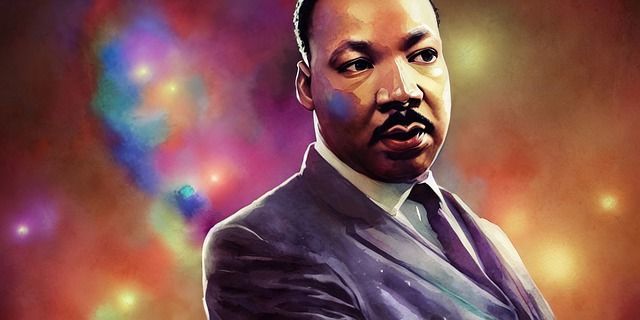How Dr. Martin Luther King Jr. Continues to Inspire
Has there ever been a more inspiring figure in American history than Martin Luther King, Jr.?

As a pioneer of civil rights in this country, his influence is still being felt to this day. But what are some of his specific accomplishments? What are some of the events that helped shape his legacy as a great leader?
I’m Character Education school assembly performer Joe Romano. I’ve spent the last 30+ years performing fun and educational school assemblies in New Jersey, Virginia, Maryland, Pennsylvania, North Carolina, and even our nation’s capital of Washington DC.
It’s my intent with this article to highlight some of Dr. King’s life as a Civil Rights leader. If you’re a parent, I encourage you to use this article as starting point to educate your children about the amazing, positive impact Dr. King had on the fight to achieve equality for African Americans.
Martin Luthor King, Jr.’s Civil Rights Crusade
Born on January 15, 1929, King eventually became a Baptist minister and Civil Rights leader who challenged racial inequality in the 1960s. He fought for the rights of people of color, railing against the Jim Crow laws of the era. King led marches and organized protests for labor rights, the right to vote, and other civil rights. But King led his protests and inspired change peacefully through the use of civil disobedience. King earned his doctorate at Boston University.
Martin Luthor King Jr’s Philosophy of Nonviolence and Peaceful Resistance
Dr. King saw the need for change in our country in the mid-20th century. Seeing the injustices of what was happening to Blacks based on nothing more than the color of their skin, King sought equal rights for all. But he was devoted to the idea of non-violent protests. Hostility, he felt, was not the answer.
King wanted our society to change. But he wanted this change to happen not through war. His message emphasized understanding each other. In his eyes, education, knowledge, and peaceful protests were the best weapons in the fight during the Civil Rights Movement.
King pushed for change using what he named his Six Principles for Nonviolent Direct Action. These principles of nonviolence were:
“Nonviolence is a way of life for courageous people.”
“Nonviolence seeks to win friendships and understanding.”
“Nonviolence seeks to defeat injustice or evil, not people.”
“Nonviolence holds that unearned, voluntary suffering for a just cause can educate and transform people and societies.”
“Nonviolence chooses love instead of hate.”
“Nonviolence believes that the universe is on the side of justice.”
The 1955 Montgomery Bus Boycott
While King is known for several important incidents in his fight for equality, the Montgomery Bus Boycott is one of the most famous. The famous boycott was born out of racial inequalities stemming from how Blacks were treated both as would-be employees as well as passengers.
In Alabama, the Montgomery Bus Line’s policy was that Blacks were not allowed to be hired for work on the line. But the injustices spread to passengers, too. Black passengers were forced to ride in the back of buses. Further, if white people needed a seat, Blacks were expected to vacate their seats for them.
This practice continued, even though a year earlier, the Supreme Court decided that segregation practices in our schools were unconstitutional.
The launching point of the boycott was the arrest of Rosa Parks on December 5, 1955. Parks, a Black woman, refused to surrender her seat to a white person. From there, the boycott lasted over a year. On December 20, 1956, the Supreme Court ruled that bus segregation in Alabama and Montgomery laws was unconstitutional.
King’s Role in the Boycott and Aftermath
After the Parks incident, approximately 40,000 Blacks boycotted the bus system in protest of racial discrimination. As these riders made up the majority of the bus system’s riders, the company undoubtedly felt the economic impact quickly.
Civil Rights activists in the area formed what was called the Montgomery Improvement Association, or MIA for short. The group voted in Dr. King, then a 26-year-old pastor of the Dexter Avenue Baptist Church as president. The group vowed to continue its boycott until the city of Montgomery met its demands.
King and others were satisfied with how the boycott played out. They were inspired to create the Southern Christian Leadership Conference. The group’s goal was to continue to use nonviolent means to achieve equality for Blacks.
The group's motto was “Not one hair of one head of one person should be harmed.”
King’s Letter from Birmingham Jail
1960 saw Dr. King and his family move back to his hometown of Atlanta. When he arrived, Dr. King joined his father as co-pastor of the Ebenezer Baptist Church. Soon after, King and his fellow Southern Christian Leadership Conference members participated in boycotts, sit-ins, and marches to fight back against segregation practices in the area.
On April 12, King was arrested for his participation in the demonstrations. While in jail, King penned his famous Letter from Birmingham Jail, in which he defended his philosophy of nonviolent protest. The letter was in response to white clergymen who had criticized his methods.
The 1963 March on Washington
In 1963, a historic march took place. On August 28, approximately 260,000 people marched to our nation’s capital as part of the March on Washington for Jobs and Freedom. This is the event where Dr. King delivered his famous “I Have a Dream” speech.
The march was originally the idea of labor leader A. Philip Randolph and Roy Wilkins, but ultimately became a joint effort amongst several civil rights groups. A large number of protestors were inspired to take action due to growing frustration over the United States’ continued racial segregation.
Randolph wanted Dr. King involved because of his charisma, hoping his involvement would increase interest in his own common goal of civil rights efforts. Originally scheduled to speak for four minutes, King wound up speaking for sixteen, delivering what many agree to be the most inspiring, powerful, and important speech of the 20th century. News stations televised the entirety of the speech across the nation.
"I have a dream that one day on the red hills of Georgia, the sons of former slaves and the sons of former slave owners will be able to sit down together at a table of brotherhood."
– I Have a Dream, Rev. Dr. Martin Luther King, Jr.
Here’s a fascinating tidbit: Despite the eloquence and power of the dream speech, many people believe the last part of it was improvised, created on the spot! King’s words remain a landmark among important famous speeches.
Dr. King’s Lasting Legacy and Impact
Due in no small part to Dr. King’s tireless campaigns against segregation, August of 1965 saw the Supreme Court pass the Voting Rights Act. This Act gave Black people the right to vote.
In 1964, in recognition of his direct action in the Civil Rights movement using nonviolent protests, King became the youngest-ever recipient of the Nobel Peace Prize.
In 1983, President Ronald Reagan signed a bill creating the federal national holiday Martin Luther King Jr. Day to honor him. Each year, our nation celebrates his legacy on the third Monday in January. He continues to serve as a model of inspiration for current world leaders devoted to equality.
Celebrate Diversity in Your School
As part of my efforts to educate and motivate children, King’s words inspired to do my own small part in the ongoing fight for equality in this country. My “The Magic in You” school assembly program features jaw-dropping magic, join-in fun, music, and important life lessons.
This program is a great way to remind future generations to treat each other with kindness, respect, and more. Want more information on this fun and motivational program? Contact me for your free, no-obligation information.
SHARE POST



